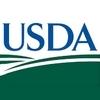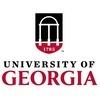Explore all the information on
Poultry nutrition - Other additives
Alternative feed additives have promising importance in broiler production due to the ban on the use of certain antibiotics. The most used antibiotic alternatives in broiler production are phytogenics, organic acids, prebiotics, probiotics, enzymes, and their derivatives. Antibiotic alternatives have been reported to increase feed intake, stimulate digestion, improve feed efficiency, increase growth performance, and reduce the incidence of diseases by modulating the intestinal microbiota and immune system, inhibiting pathogens, and improving intestinal integrity. Simply, the gut microbiota is the target to raise the health benefits and growth-promoting effects of feed additives on broilers. Therefore, naturally available feed additives are promising antibiotic alternatives for broilers.
1 | INTRODUCTION Due to the impact of climatic changes and other global events such as conflict, the Covid‐19 pandemic, recession, and supply chain issues, conventional feed ingredient prices are continually increasing. The effect of these constraints is felt largely in developing countries that are coming under huge pressure to source raw materials such as corn and soybean meal (Abro et al., 2020). The search for alternative feed ingredients to sustain the livestock...
Comments : 0
Recommendations: 1
In this video, Dr. Leeson unravels the intricate world of protein and amino acids...
Comments : 0
Recommendations: 1
I. Introduction Plant-derived isoquinoline alkaloids (IQ) have the potential to support gut integrity and growth performance under conditions of enhanced stress such as heat stress. The previous study revealed that the BW increased in the IQ group, and the level of FITC-d, to evaluate the gut barrier function, reduced in the IQ supplement group (Kitasato et al., 2021). However, a comprehensive study on the effect of IQ on growth performance and gut integrity under heat stress during...
Comments : 0
Recommendations: 0
The increasing prices of major feed ingredients have prompted animal nutritionists to use inexpensive raw materials in their diet formulations to lower feed cost. However, due to their relatively lower digestibility, diets formulated with these raw materials often lead to poor gut health status and animal performance. For instance, poor protein digestibility results in the formation of toxic metabolites that can impair gut health and subsequently confer negative effects on broiler...
Comments : 0
Recommendations: 0
1. Introduction In recent years, the poultry sector has been developing rapidly worldwide to meet the growing consumer demand for poultry meat and eggs. Chicken meat is low in saturated fat and rich in protein, vitamins and minerals [1]. Similarly, a hen’s egg is the most affordable source of animal protein and constitutes a complete and highly nutritious food with significant health benefits for consumers [2]. It is estimated that animal-based food demand will grow by...
Comments : 0
Recommendations: 0
1. Introduction The availability of good quality quail eggs to consumers depends on the degree of deteriorative impacts they have suffered before being offered for sale. This degree of deterioration will be determined by the management of the eggs, which mainly includes the environmental conditions to which they are subjected, whereby the degree of internal deterioration of eggs is lower in cool compared to hot environments [1,2]. However, these cool environments will only be fully...
Comments : 0
Recommendations: 0
Feed plays a fundamental role in the growth and development of farm animals, as a balanced diet is essential for their health and determine an optimal performance. One of the most important aspects in the production of animal feed is the presentation of the feed, as it has a direct influence on feed consumption and...
Comments : 0
Recommendations: 0
There is increasing evidence that supplementing small amounts of prebiotic xylo-oligosaccharides (XOS) into poultry diets has positive effects on bird performance and gastrointestinal health. Soluble XOS that reach the caeca intact are utilised by beneficial bacteria, inducing positive effects such as increased production of short chain fatty acids (Aachary & Prapulla, 2011). Commercial endo-xylanases are added to diets to reduce digesta viscosity, but have the side effect of producing...
Comments : 0
Recommendations: 1
.jpg&w=3840&q=75)

Jonathan Cade comments on his new role as Chairman of the U.S. Poultry & Egg Association
Suggested link
in the second part of this interview, Dr. Koushik De, Director-Technical Services at Novus International South Central Asia, explains why we should care about Trypsin Inhibitor and how to deal with it in Soybean meal...
Comments : 6
Recommendations: 5
Dr. Mário Penz (Cargill) talks about how to keep improving nutrition analysis, taking into account digestibility coefficients and ingredient quality, among other factors, during this Engormix interview....
Comments : 0
Recommendations: 1
Dr. John Thomson, U.S. Sales Manager for Feed Additives at AlzChem, points out how the 3rd evolution cellular nutrition concept influences price and increases performance
...
Comments : 1
Recommendations: 1
Creamino® is a natural source of energy in animal nutrition. With Creamino® we provide a creatine solution for animals and relief the animal from own creatine synthesis. Creatine is important for energy supply not only in muscle cells but also in macrophages and in the heart. Therefore, with Creamino® we supply energy as well for the immune system and stress tolerance. ...
Comments : 13
Recommendations: 3
1. Introduction Coccidiosis is a major enteric infection of poultry that is estimated to cost more than USD 14.5 billion annual losses globally [1]. Although coccidiosis control using various anticoccidial chemicals, such as ionophores, coccidiocides, and coccidiostats, has long been a mainstream strategy in modern poultry production, alternative control strategies to antibiotics are necessary owing to the antibiotic ban [2]. Therefore, much effort has been made to develop...
Comments : 0
Recommendations: 1
Introduction The need for the animal sector to create ever-more-sophisticated strategies for producing animal protein in increasingly environmentally and economically responsible ways is growing. In addition to setting up ethical and environmentally friendly structures for subsequent generations, this is done to ensure that food is safe for consumption today [1, 2]. The incorporation of feed additives to accomplish these objectives has grown increasingly crucial as regulations...
Comments : 0
Recommendations: 1
.jpg&w=3840&q=75)

Evaluation of methionine sources on performance and carcass traits of broilers
Suggested link
Introduction High cost of conventional ingredients such as maize as source of energy, soybean, groundnut cake and fish meal as source of protein in broiler’s diet has increased the cost of feed and consequently increased cost of production (Attia, 2015). The cost of feed represents about 75% of the total costs of animal production. Also, non-availability and competition existing among man, industry and livestock have necessitated the need to find cheap and available...
Comments : 0
Recommendations: 0
I want to discuss the importance of organic acids in feeds ...
Comments : 1
Recommendations: 0
Brett Roosendaal (Nutrition Executive at Epol) shares his insights on quality control methods and indicators of soybean, as well as market prices and inclusion rates, during this Engormix interview....
Comments : 1
Recommendations: 0
Optimal soybean (SB) processing conditions is essential to ensure that antinutritional factors as trypsin inhibitors are deactivated while maintaining protein solubility and dispersibility. Heat processing is critical for improving amino acid digestibility of extruded SB for broilers. Excessive heat treatment can lead to denaturation of proteins, resulting in a negative impact on animal performance and microbiota composition. In this study, we investigated the effect of three different...
Comments : 0
Recommendations: 3
Nutritionists have access to various ingredients that fulfill methionine (Met) requirements of broilers. Amino acids (AA), such as DL-methionine, are nearly 100% bioavailable while methionine hydroxy analogs are shown to be relatively less bioavailable. Thus, this experiment aimed to determine the efficacy of using a 65% DL-methionine and 35% limestone dilution product (65DLM) compared to a methionine hydroxy analog (MHA) product when included in a diet deficient in total sulfur AA. A...
Comments : 0
Recommendations: 5
Producers are concerned about the economic impact of dietary energy costs in broiler production, as feed expenses amount to nearly 50% of the total costs. As such, reducing dietary energy costs while improving the feed conversion ratio (FCR) has been a focus of poultry producers for many ...
Comments : 0
Recommendations: 0


























.jpg&w=3840&q=75)


.jpg&w=3840&q=75)






